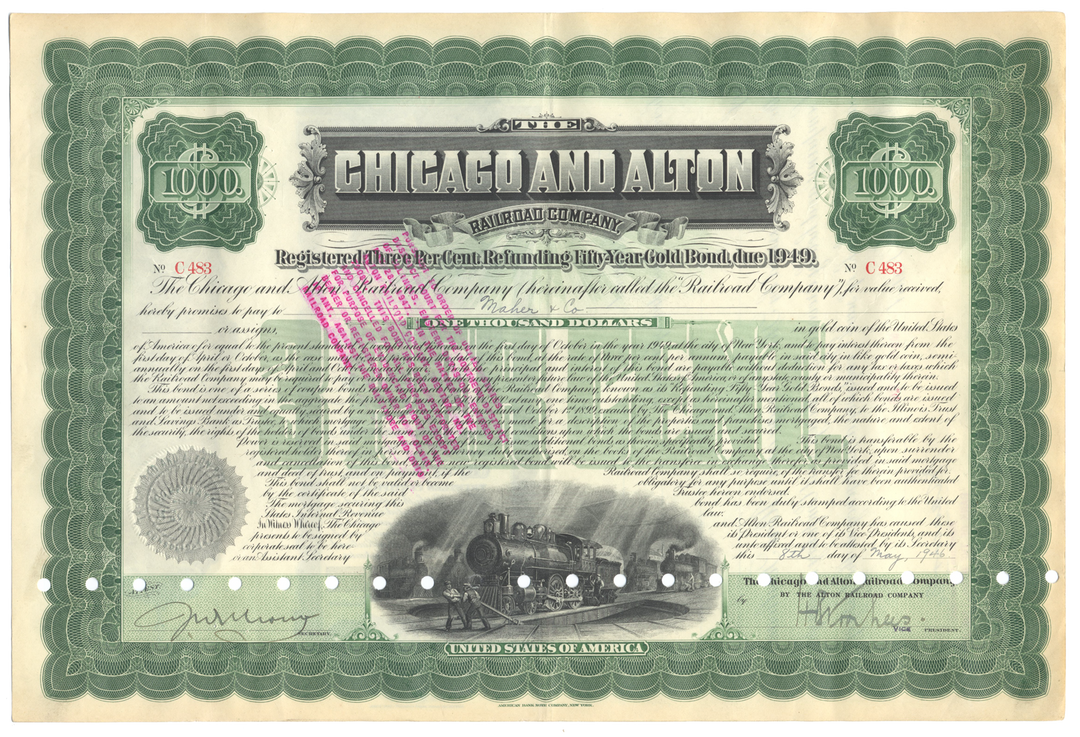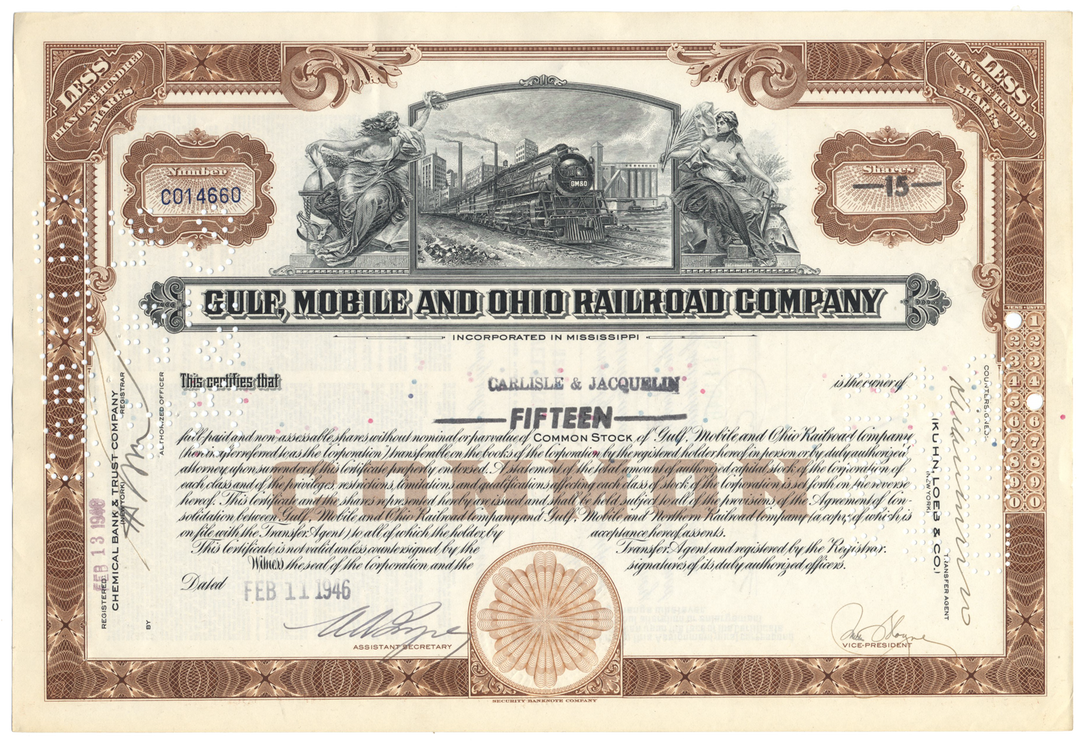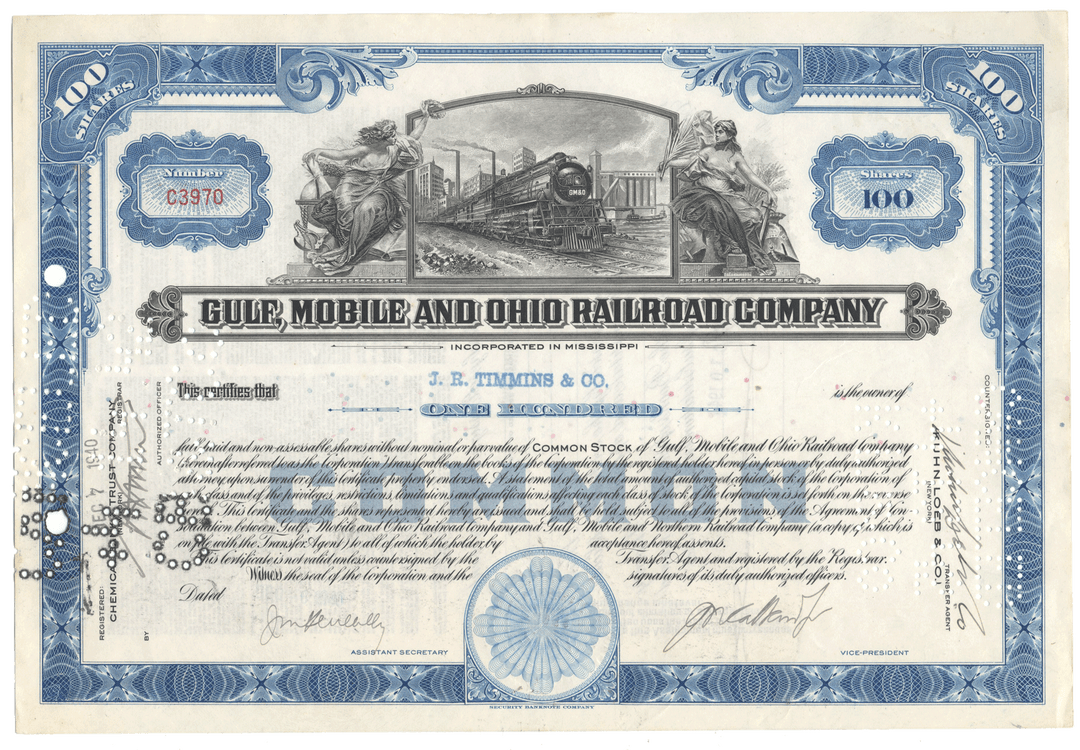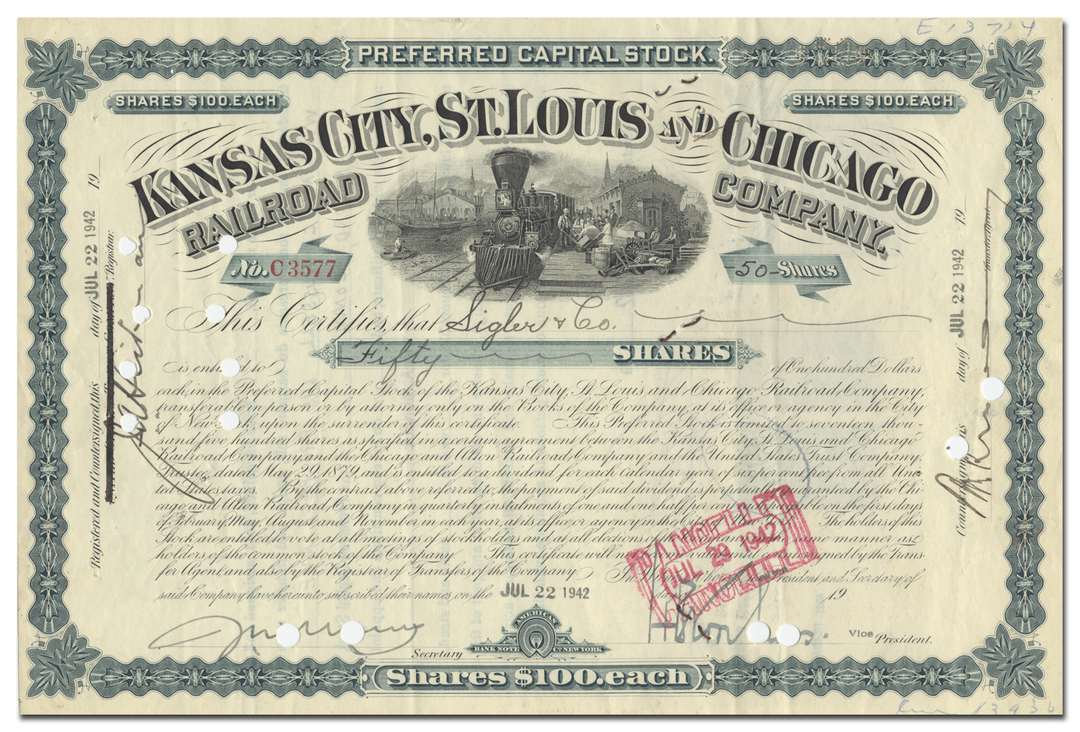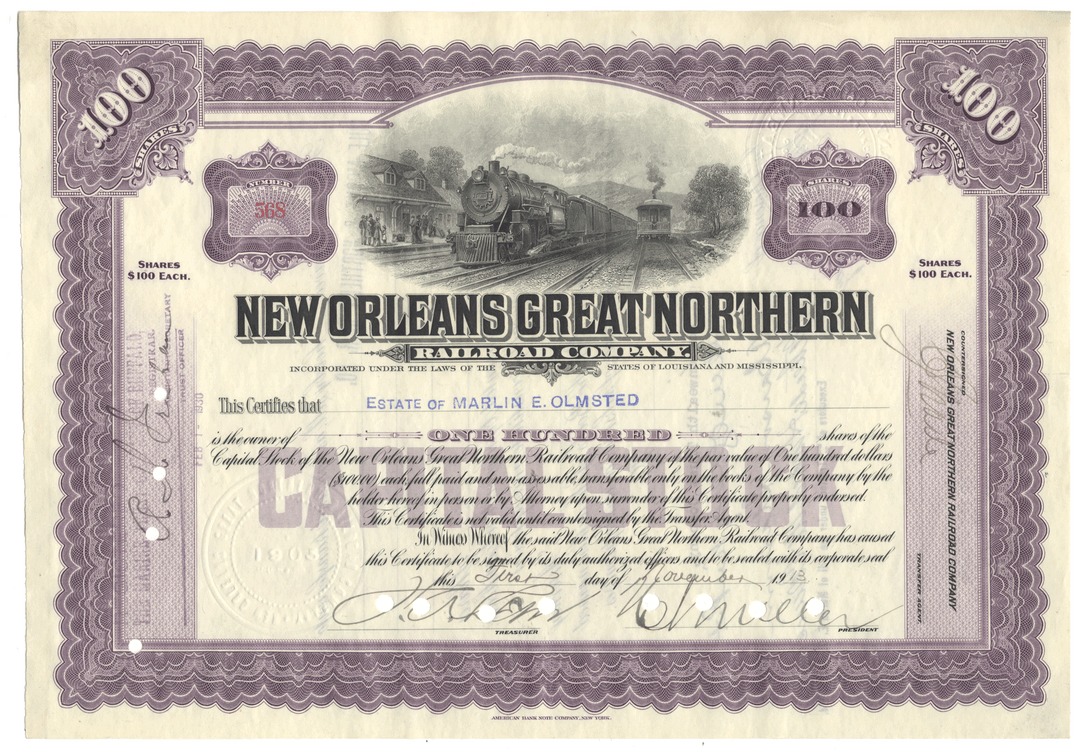
The Gulf, Mobile and Northern Railroad was created as the reorganization of the New Orleans, Mobile and Chicago Railroad in 1917. The GM&O was incorporated in 1938 to merge the Gulf, Mobile and Northern Railroad and the Mobile and Ohio Railroad, which was accomplished in 1940. The GM&O later bought and merged the Alton Railroad in 1947.
Isaac B. Tigrett, a native of Jackson, Tennessee, was president of the GM&N from 1920 and of the GM&O from 1938 to 1952, and oversaw the development of the road from a nearly bankrupt operation into a thriving success. He was the great-uncle of Hard Rock Cafe founder Isaac Tigrett, also a native of Jackson.
From 1952 to 1972 the headquarters of the GM&O were in Mobile, Alabama at 104 St. Francis Street. The President of the GM&O Railroad during this period was G. Paul Brock. The Railroad retained the passenger terminal at Beauregard Street for additional offices.
At the end of 1944 GM&O operated 1950 miles of road, including NOGN; at the end of 1950 it operated 2898 route-miles. At the end of 1970 route mileage was 2734 (3946 miles of track); GM&O reported 8285 million ton-miles of revenue freight and 44 million passenger-miles for that year.
The GM&O Railroad was the first "large" railroad in the United States to replace all its steam locomotives with diesels.
On August 10, 1972 the Gulf, Mobile and Ohio Railroad merged into the Illinois Central Railroad, forming the 9600-mile north-south Illinois Central Gulf Railroad. In 1988, the railroad dropped the "Gulf" from its name, reverting its name to the Illinois Central Railroad. In 1996 Illinois Central spun off some of its redundant trackage, including most of the former Gulf, Mobile and Ohio. Most of this trackage was acquired by other railroads.
On February 11, 1998 the Illinois Central was purchased by the Canadian National Railway (CN) with the integration of operations beginning on July 1, 1999.
The GM& O has many references in pop culture. Sonny Boy Williamson recorded the song GM&O Blues in 1945.
A GM&O EMD E7 and passenger cars were featured in the 1967 film In the Heat of the Night.
In popular music, the GM&O line is referenced in Adrian Belew's "The Rail Song," a nostalgic song about the heyday and subsequent decline of the American railroads. Originally on 1983's Twang Bar King album, the song can also be found on the Desire of the Rhino King compilation and in an acoustic version on both The Acoustic Adrian Belew and the Salad Days compilation.
The album cover of the 1989 Traveling Wilburys song End of the Line features an upside down photograph of the Ann Rutledge at Lincoln, Illinois in 1953.








